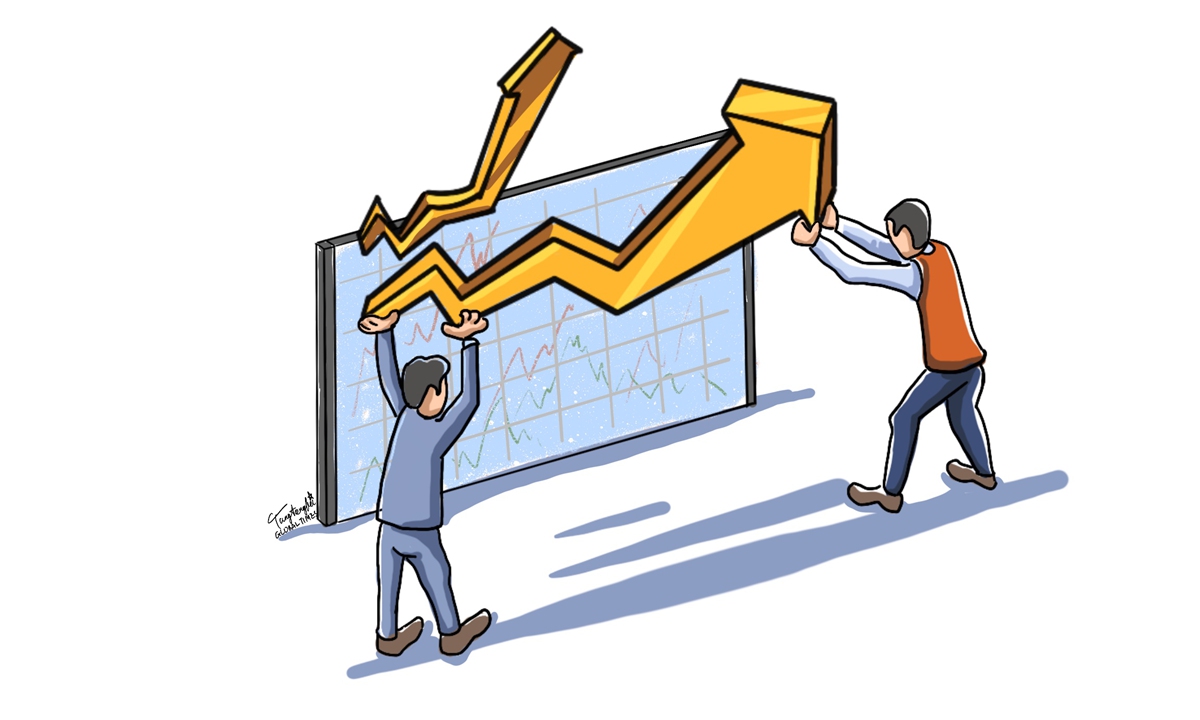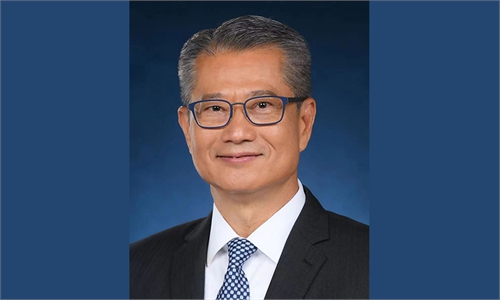
Illustration: Tang Tengfei/Global Times
When Western media outlets and politicians warned about the so-called global impact of China's anti-COVID-19 measures on supply chains, investors appeared totally unimpressed, an ironic contrast that reveals the real level of market confidence in the Chinese economy amid Western badmouthing.US-listed Chinese stocks had their best month ever as investors bet on the prospects for China's economic recovery from the pandemic. The NASDAQ Golden Dragon Index, known as the benchmark of US-listed Chinese shares, surged 9.6 percent on Wednesday, ending November up more than 42 percent and marking the biggest monthly advance since the index begin in 2001.
Some analysts said optimized anti-COVID-19 measures, government measures to stabilize the domestic real estate sector, and better-than-expected earnings reports from major internet companies all contributed to the significant gains in US-listed Chinese stocks in November.
To a certain extent, investors' preference for US-listed Chinese stocks is indicative of the rising optimism about the momentum of China's economic recovery. At present, Western media outlets have hyped up a new campaign denouncing China's anti-epidemic measures, and a surge of COVID-19 infection cases have indeed caused certain drag on consumption and economic recovery in some places. But the best ever monthly performance recorded by US-listed Chinese stocks shows that the market remains largely bullish on the future of the Chinese economy and the business outlook of Chinese companies.
Such an objective view of the Chinese economy is not something that Western media outlets can change with some pessimistic predictions, which have never turned out to be accurate over the past few decades. If anything, the confidence in the Chinese economy comes from the solid economic fundamentals, combined with market resilience and size.
Of course, optimism is by no means the same thing as avoiding problems, and the road ahead for China will be bumpy. Internationally, the world economic recovery is still fragile and weak, and if the US and Europe slip into recession next year, China's exports will also face great pressure.
Domestically, balancing anti-epidemic measures with normal economic activity remains a key question to be answered by the Chinese economy. There is no denying the recent outbreaks of COVID-19 epidemic in several cities have posed serious challenges to the continued economic recovery. But it would be premature and one-sided to think that the short-lived impact of the epidemic is the end of Chinese economic development.
It should be noted that with the release of a circular announcing 20 prevention and control measures on further optimizing COVID-19 responses, the overall trend of epidemic prevention and control in various localities is moving toward optimization, precision and minimization of impact on people's daily lives. It has been made clear that China's epidemic prevention and control needs to follow a road that matches the economic and social development.
In addition to the inherent resilience of the Chinese economy, China's economic governance capability is also a strong foundation for continued confidence and optimism. The central government announced a series of economic policies and measures that aim to stabilize the economy in November. For example, the People's Bank of China (PBC), the country's central bank, recently announced a 25 bps cut in reserve requirement ratios for financial institutions, in a move to inject more long-term liquidity into the market. Moreover, China's securities regulator announced five measures to offer an extended credit line to the country's developers. While the impact of these measures on liquidity may be still limited, they are actually playing a greater role in releasing a clear policy signal of the government direction when it comes to stabilizing market expectations.



